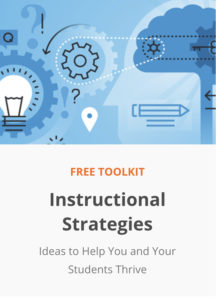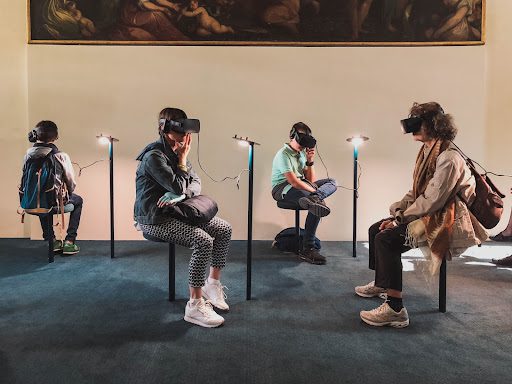If the last 18 months have taught those of us in education anything, it’s that digital learning, in some capacity, is here to stay. In a world that’s becoming reliant on our online existence, everything from smart speakers to VoIP systems requires the internet these days.
With this being the case, the current trends in instructional design need to have taken this into account. Without considering this eventuality, it’ll likely prove unsustainable going forward. In this article, we’ll take a look at nine of these trends that are here to stay, and explain why you should consider using them.
What Is Instructional Design?
We do first have to make sure that everyone is on the same page as to what instructional design is. Where you have something like curriculum development that is more concerned with the content of teaching, instructional design focuses on how this content can be delivered.
With this being the area that instructional design focuses on, the trends of human behavior that have gravitated toward a more technological existence have become all the more important.
Ten years ago, if you’d have asked a classroom “what is a social media influencer?” or “what is a virtual phone call?”, chances are you’d not have gotten an answer. Now, you would.
In understanding how to most effectively deliver learning materials, you need to know where your audience is at and meet them there. Below, we’ll outline nine such trends and see how they are solving this potential issue.
1. Prioritizing Learners
This is less of a current trend and more of a core principle that bears repeating. Prioritizing the people you are teaching will be nothing new. Yet, it should be one of the cornerstones of your instructional design.
Without prioritizing learners, you risk delivering the correct content in an ineffective, counterproductive manner. This will likely deliver sub-par results for you and your students, leading to conversations you’d rather not have.

Suppress the impulses of ego—“my way or the highway.” It just doesn’t work, particularly in higher education. View all our remaining points through the lens of how “appropriate” they are to your unique circumstance, and how they allow you to make real connections with your students.
2. Personalization
 A bi-product of the rampant digitalization of our everyday life has been that people not involved in education have shown the way to reaching people where they’re at. Not in a geographical sense—you don’t have to get your website.com or .ae domains to reach a global audience.
A bi-product of the rampant digitalization of our everyday life has been that people not involved in education have shown the way to reaching people where they’re at. Not in a geographical sense—you don’t have to get your website.com or .ae domains to reach a global audience.
Marketers in particular have shown how effective the personalization of content is on those between the ages of 16–24 (Generation Z).
These also tend to be the people who make up the majority of the education population. With this in mind, adapting your educational content to maximize personalization is a great idea.
It won’t be possible to build an entire curriculum of completely individualized content. However, quizzes and tests can be adapted in a manner that speaks to the individual directly, and their interests.
3. Microlearning
Throughout our lives, we’ll encounter many problems that seem insurmountable. Some B2B business examples include improving outreach or global shipping. Taken at face value, these hurdles seem impossible to overcome.
However, if we can break them down into their component parts, suddenly navigating them as a whole becomes a lot easier.
This is the philosophy behind “microlearning”. It teaches students the benefits of compartmentalizing a problem in order to resolve it on a step-by-step basis.
Learning an entire language overnight is impossible. Yet learning different words, phrases, and statements incrementally allows students to get a better grasp of the language as a whole.
4. Social Learning

These next three points have more to do with the varying ways in which different people learn and adapt teaching to these. The first is social learning. This isn’t, as you may have assumed, anything to do with leveraging social media into your design.
It’s more about teaching in a more communal way, which tends to suit observational learners best.
It is a long-established instructional design technique that encourages discussion between students in order to arrive at a solution to a problem.
When students feel they have a supportive network of people and don’t have to make decisions on their own about something that they have very little knowledge of, observational learners thrive.
5. Video Learning
Video learning is a trend that may suit more visual learners. If students are struggling with a concept or a problem because they can’t visualize it from the written word, then a video demonstration can help.
Visual learners need to be able to see the form that this concept or problem takes in order to formulate a solution to it. By utilizing video, either for lectures or virtual conferences, you not only provide them with a convenient study environment but an eternally rewatchable resource that they can return to whenever they need it.
6. Mobile Learning

At the start of this article, we covered how needing to adapt to the technological existence of most students is key when it comes to instructional design. Mobile learning is one of the best ways in which you can do this.
Not to overly generalize, but students are largely glued to a device of some kind or another, something that has only increased with the rise of remote learning.
Transporting educational material from the seemingly archaic textbook onto the screen is not only more ecological but allows them to engage with the material in a more tangible, interactive manner.
Whether it’s understanding the elements of the universe or dealing with the meaning of VoIP, mobile learning is a step closer to more engaged students.
7. Virtual Reality and Augmented Reality

If you’ve already embraced mobile learning, then virtual reality or augmented reality allows you to take it one step further. What is continuous integration if not a method to allow you to keep pushing forward and engaging students?
By building content in this area of technology, you can immerse your students into their work in a way that simply didn’t exist five or ten years ago.
VR does rely on a certain amount of high-level, high-cost equipment that not every person or institution will have access to. AR, however, is the main feature in a lot of operating systems nowadays, and as such, an increasing number of educational materials can be found with AR components.
It won’t be useful for all subjects, but if a topic requires a more hands-on approach, and real-life experience can come at a severe cost—surgery, for example—then AR allows you to bridge that gap in a largely risk-free manner.
8. Gamification
The most common complaint that you’ll hear around learning materials is that they’re uninspiring. Regardless of the format—from textbooks to video to VR—if they don’t give the students a reason to care, then the knowledge they gain from it will be minimal.
Most people have at least a slight competitive streak within them. So, why not take advantage of that? Presenting education to them in a way that can be turned into a game or a challenge initiates this competitive spirit without conscious regard for what they’re learning.
If you think about how much more exciting a sport is for most people looking to keep fit, other than just running on your own, the reasoning behind this trend begins to make sense. People are engaged by something that can reward them, so why not lean into this when presenting your educational material?

9. Analytics
Analytics is less about a method of teaching and more about a trend that helps with your educational ethos. Just because something feels like it’s working and just because it’s getting good responses from your students doesn’t mean it’s being all that effective.
Students will gravitate toward activities they’re comfortable with. If they tell you they’re enjoying something about how you’re teaching, be wary that this isn’t because it lacks challenging elements.
By using the resources available to you now in the world of data and analytics, you can track the real-time progression of your students. This not only allows you to see how they’re performing but allows you to understand the reason behind this.
Conclusion
In this article, we’ve discussed nine current trends that exist in the instructional design space that are here to stay. Most of them have to do with new ways of delivering information. They are reactive and respond to the natural evolution in how students generally consume information.
Also, there are some principles that you can adhere to regardless of what you teach or how you teach it. This is because some subjects need to be taught in a certain way—it’s difficult to imagine teaching algebra through VR, after all.
Nonetheless, there are still avenues you may not have explored before, outlined in the above points, that could benefit your pupils. For their sake, it’s worth doing now rather than later.
See also:


